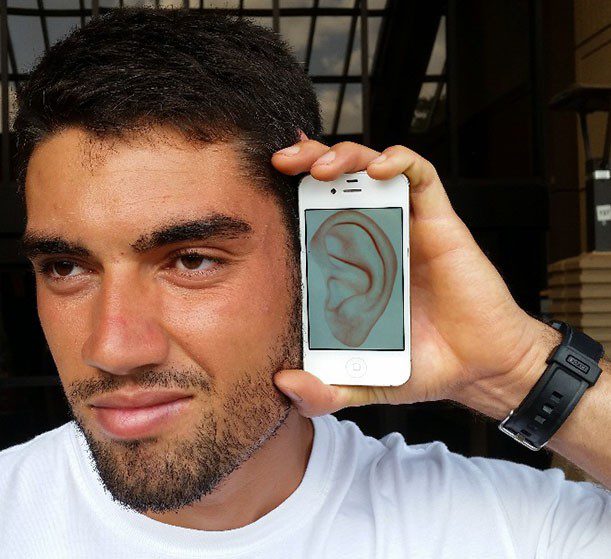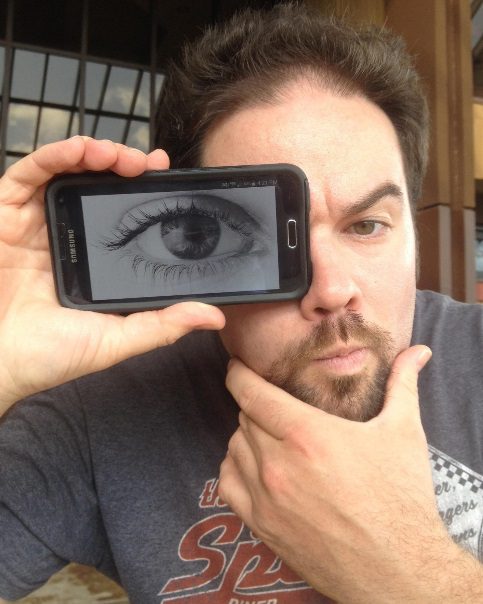By Jonathan Webber, Kapi‘o Staff Writer /
As college students continue to explore the ways in which smartphones can enhance their absorption of course material, they are increasingly turning to applications that cater to their particular learning style.
“Some people like auditory, or visual, or whatever,” says Kapi‘olani Community College student Veronical Alvarez. “If you’re an auditory learner, it’s better to hear the notes over and over again, to hear the actual lecture over and over again.”
Alvarez is one such auditory learner. She has found that she best obtains the information needed to study and process the knowledge using her sense of hearing. A diligent student, Alvarez attends lectures and uses her smartphone during class as a tool to enhance her learning.
“I record my lectures,” she said. “If you’re writing notes, and (the professor is) talking faster than you can write, you can always go back and catch what you don’t catch the first time around.”
Alvarez is able to employ her smartphone in other ways to learn information in an effective manner. She sends text messages to peers in her study group, and reaches out for clarification on specific topics to professors during their office hours via phone call. Teachers often sketches out visual representations of concepts on the whiteboard in class.
“When they do group activities in which everyone puts stuff up on the board, I’m not gonna go that crazy, handwriting everything,” Alvarez said “I’ll just take a picture of it. I can transcribe it later, at my leisure. I don’t take notes that fast.”
Students are different, and what may work for one may not be effective for another. Visual learners prefer graphic representation of the material in order to fully process the topic. These students are able to use their smartphones to follow along with a PowerPoint during the lecture, or watch the tutorials their professors have put on Laulima to study at home.
“Some people are so visually oriented that it helps them, in certain ways, to see it,” said KCC assistant professor of nursing Patricia Taylor.
Taylor observes students using their smartphones in a variety of ways during her classes. She responds by posting material in a variety of ways on Laulima to enable her KCC students to be self-sufficient and involved in their learning. Taylor is aware of and caters to the different types of learners who come through her classroom.
“Some students do take pictures and movies (in class),” she said. “They do that so they can go home and study what the instructor just showed, in a more visual way. Students are taking photographs of the board … and they’re looking things up in class sometimes.”
Smartphones may have calling and texting at their core function, but they are not used in such a rudimentary manner in class. They can take the place of encyclopedias and be a source of information at the students’ fingertips. They may be used as a timer for tests, or to participate in live quizzes in class.
How does Taylor observe students engaging their smartphones in her classes?
“That’s mainly it, “ she said, “as a resource.”
Smartphones can also have a negative effect on student learning. A noisy notification or ringtone disrupts everyone, but the distraction does not end when the phone is put on vibrate mode. Different types of learners are also subjected to different kinds of adverse stimulation.
“It’s the visual stuff that’ll distract me, and the sound” said Alvarez.
Alvarez said she finds it hard to stay focused when there are sources of stimuli other than the lecturer’s voice occurring. Students may not realize that when they reply to a text message or play a game in class they are also being quietly disruptive to the learning of others. Despite the potential of smartphones to be harmful to her educational process, Alvarez said she believes that the current generation of students are utilizing and embracing the span of this new technology well.
“We do way better stuff with our phones than (the teachers) do,” Alvarez said. “Students are more tech savvy.”
Alvarez is illustrating the point of how the tools used in the world of education are advancing. As students become familiar with the capabilities of a smartphone, they take a step into the future of knowledge. Learning how to use a smartphone to assist oneself in learning information in the manner that works best for them is crucial for the success of KCC’s current and future students.
“I’d say it’s integral” confides Alvarez. “I need my phone.”


